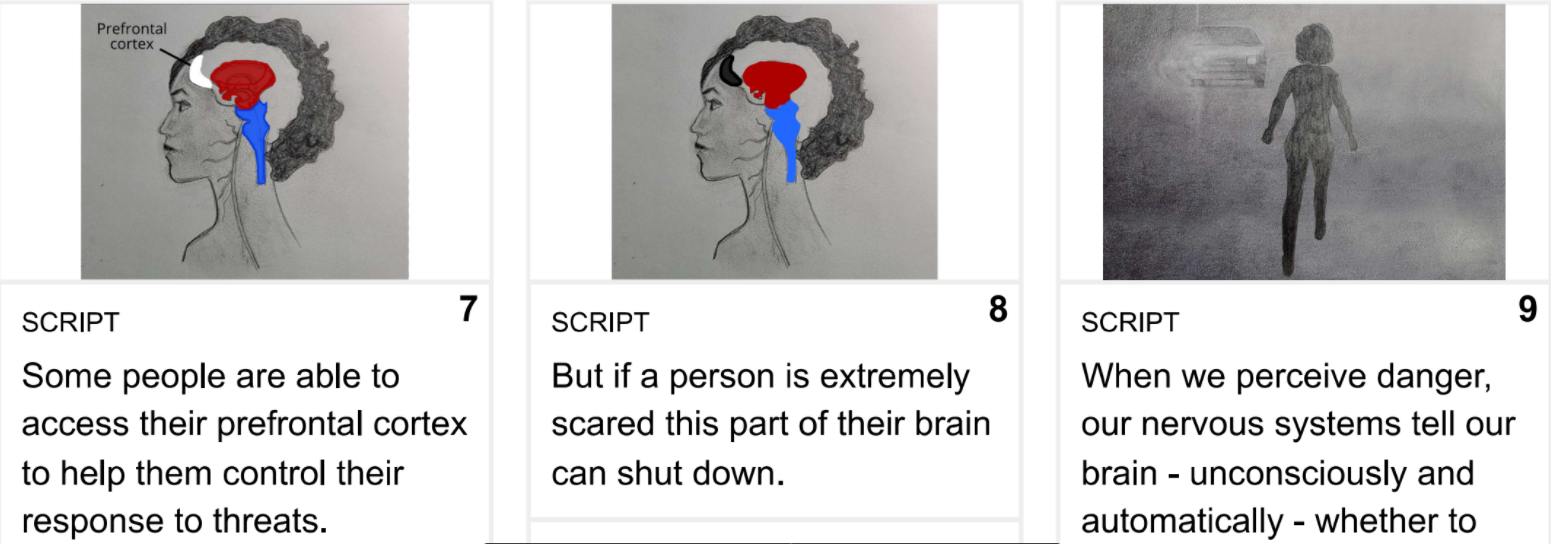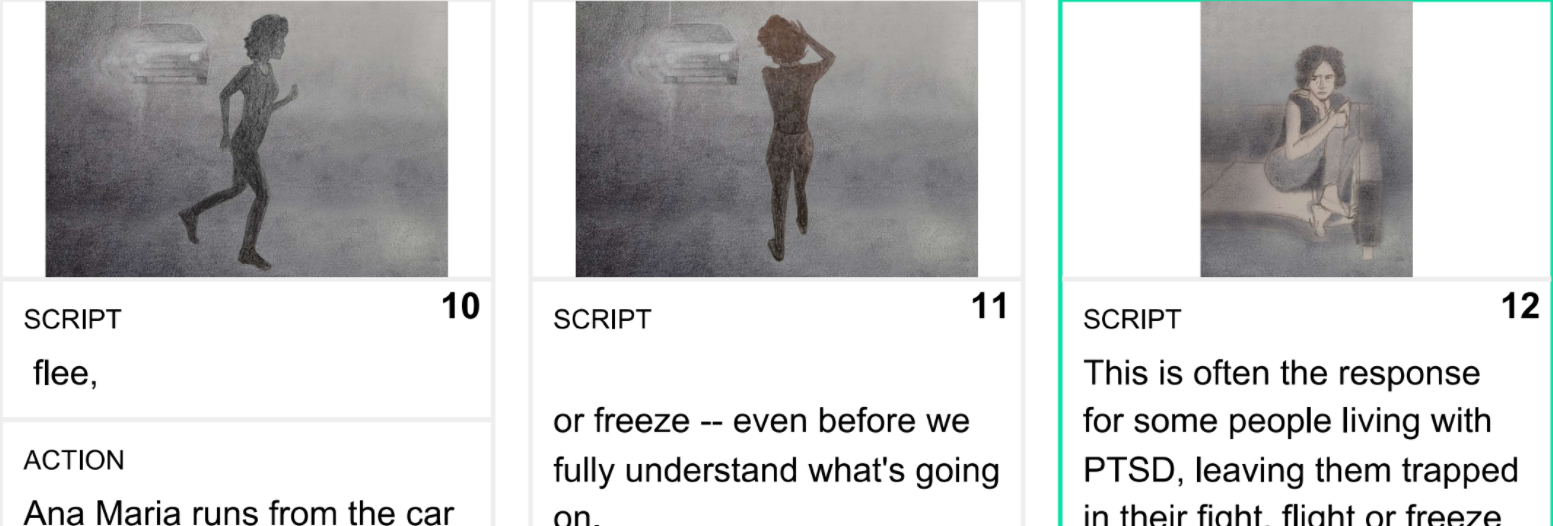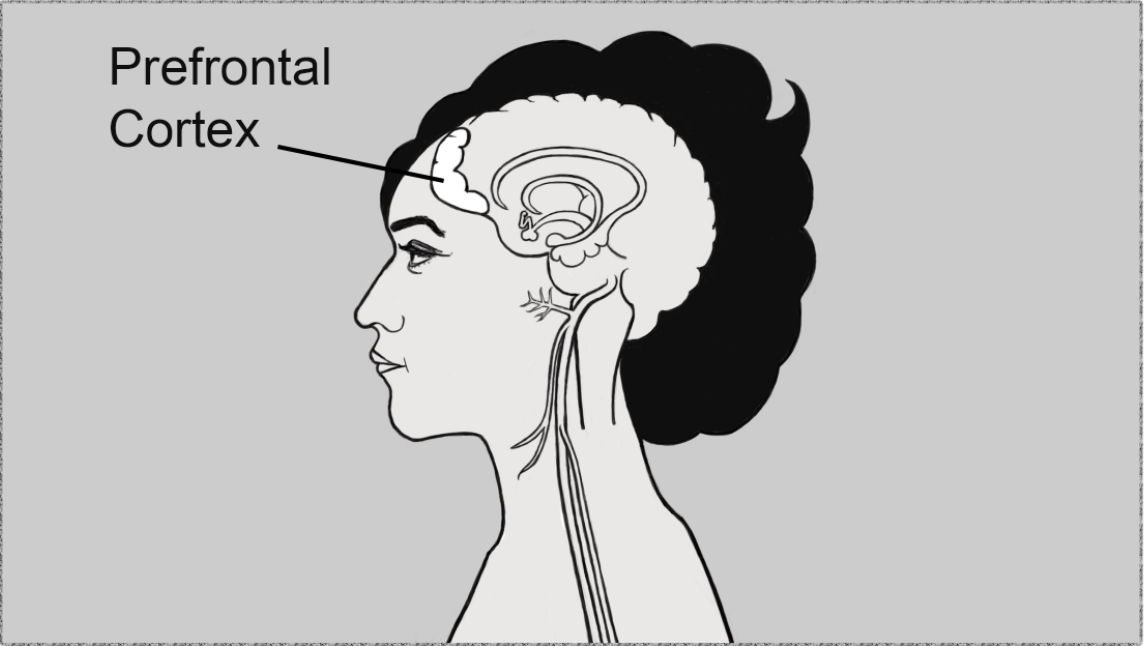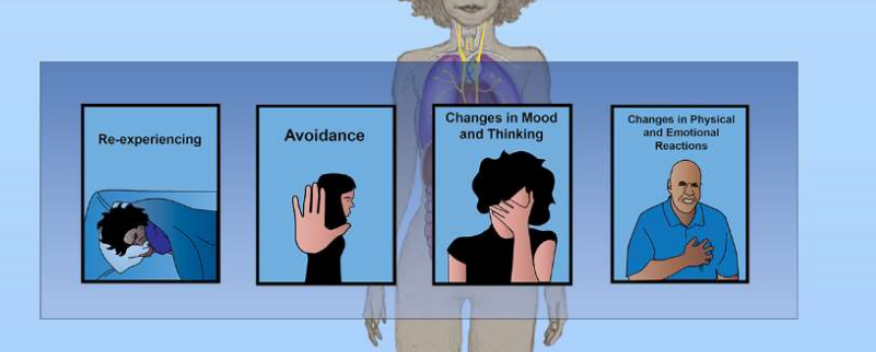PTSD: Embodied Labs
Sample preproduction storyboard from PTSD Labs showing the 3 main areas of the brain involved in PTSD (1st and 2nd image) and fight response (3rd image).
PTSD: Embodied Labs: Project Description
Embodied Labs, a VR empathy software company, contracted me to design three learning labs that teach clients about PTSD. In the labs, users embody a character who develops PTSD, struggles to learn how to manage the symptoms and stigma of PTSD, and then experientially practices research based healing strategies. Users also learn about how PTSD affects the different areas of the brain that cause its main symptoms. These neuroscience explanations were included to teach users that PTSD is not their fault and is an unconscious reaction of their nervous system to an actual or perceived life or death situation.
One goal of the labs was to help users develop empathy and understanding for what a person with PTSD struggles with physically, emotionally, and socially. Another goal was to reduce the shame of people who currently have PTSD. Many of the physical changes in the brain caused by PTSD create negative behaviors that people mistakenly label as character flaws.
The project began with an extensive study of the scientific literature on PTSD. The work of leading trauma researchers such as Bessel Van Der Kolk, Steven Porges, and Peter Levine guided much of the scientific content in the labs. The story in the labs was partially based on my own experiences with developing PTSD from being hit by a bus on my bike. As the instructional designer, I then created the education goals, objectives, and player experience goals. Then, I collaborated with a small team to write the script, give feedback on the creation of the storyboards, and design the interactivity and UI/UX for VR and web platforms.
The labs are still in pre-production. They will be filmed with live actors and put into a VR and web based App on the Embodied Labs website. All Embodied Labs clients will have access to the labs once they are produced.
Pre-production Flight, Fight, and Freeze responses storyboarded.
Pre-production Storyboards of the Vagus nerve’s role in regulating the organ systems of the body.
Detailed storyboard showing the parts of the brain involved in stress response and the vagus nerve. Stressful situations can inhibit the prefrontal cortex of the brain from functioning properly. This area of the brain helps people think logically and plan.
VR/Web UI/UX designed to teach users about PTSD symptoms.
Interactive visual vocabulary. When users click on one of the 4 main PTSD symptom categories (1st image) and then the symptoms individually (2nd image) an illustration pops up that describes the condition visually. This helps learners who are non native English speakers understand the vocabular better.





